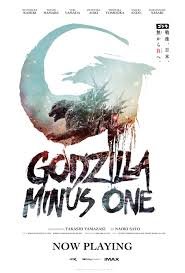Image Credit: Rotten Tomatoes
Godzilla Minus One has taken the film world by storm, achieving a perfect score on Rotten Tomatoes. This latest addition to the iconic Godzilla franchise has captivated audiences and critics alike, solidifying its place as a standout in the realm of monster movies. The film’s success on the popular review aggregator site has sparked widespread interest, prompting discussions about its quality and impact on the genre.
The movie’s plot, set in post-World War II Japan, offers a fresh take on the classic Godzilla story. Critics have praised its compelling narrative, stunning visual effects, and powerful performances. This article delves into the factors contributing to Godzilla Minus One’s perfect Rotten Tomatoes score, explores its premise and storyline, and examines the critical reception that has led to its remarkable achievement. By analyzing these aspects, we aim to shed light on what makes this new Godzilla movie a must-see for fans and newcomers alike.
The Perfect Rotten Tomatoes Score
Rotten Tomatoes has become a trusted source for movie and TV show recommendations, with its Tomatometer score representing the percentage of positive professional critic reviews. A score of 75% or higher, along with at least five reviews from Top Critics, earns a film the coveted “Certified Fresh” status. For Godzilla Minus One to achieve a perfect 100% score is a remarkable feat, placing it in the elite “100% Club.” This club consists of movies where all critic reviews are Fresh, without a single Rotten mark. Achieving this status is challenging, as even minor flaws can lead to a less-than-perfect score. The perfect score indicates that Godzilla Minus One has impressed critics across the board, suggesting exceptional quality in various aspects such as plot, performances, and visual effects.
Godzilla Minus One: Plot and Premise
Godzilla Minus One takes place in post-World War II Japan, offering a fresh perspective on the iconic monster’s story. The film begins in 1944 with Kōichi Shikishima, a kamikaze pilot who avoids his mission by claiming engine trouble and lands on Godzilla Island. The narrative then spans from 1944 to 1948, exploring the aftermath of the war and the atomic bombings of Nagasaki and Hiroshima.
The movie’s premise revolves around Japan facing a new threat in Godzilla while already devastated by war, pushing the country further into crisis. This concept reinforces Godzilla’s original metaphor as a symbol of nuclear destruction and an unprecedented power that humanity has never encountered before.
Godzilla Minus One skillfully blends intense monster attacks with a compelling human drama. The story focuses on Shikishima, a shame-ridden former soldier trying to rebuild his life in a economically depressed and emotionally scarred nation. Through this character-driven narrative, the film delves into themes of guilt, shame, and the struggle for redemption in post-war Japan.
Critical Reception and Reviews
Godzilla Minus One has garnered widespread acclaim from critics and audiences alike. Many reviewers have hailed it as one of the best Godzilla films in recent years, with some even comparing it favorably to the original 1954 classic. Critics have praised the film’s compelling narrative, which seamlessly blends intense monster attacks with a character-driven human drama. The movie’s exploration of serious themes, such as survivor’s guilt and the aftermath of war, has been particularly well-received. Reviewers have also commended the film’s visual effects, noting that despite its relatively modest budget of $15 million, it managed to win the Oscar for Best Visual Effects. The pacing, storytelling, and production values have all been lauded as expertly executed, contributing to what many consider one of the year’s best films.
Conclusion
Godzilla Minus One’s perfect score on Rotten Tomatoes is a testament to its groundbreaking approach to the monster movie genre. The film’s blend of intense action with a character-driven story set in post-war Japan has struck a chord with critics and audiences alike. Its exploration of themes like guilt and redemption, combined with top-notch visual effects, has cemented its place as a standout in the Godzilla franchise.
This movie’s success shows how a fresh take on a classic monster can still captivate viewers today. It proves that with a strong story, compelling characters, and skillful filmmaking, even a well-known franchise can reach new heights. Godzilla Minus One not only pays homage to its roots but also pushes the boundaries of what a monster movie can be, setting a new standard for future entries in the genre.
FAQs
What makes Godzilla Minus One a standout film?
Godzilla Minus One explores deep emotional and philosophical themes concerning humanity, nature, and survival, addressing how individuals handle loss, trauma, and inevitable changes. This blend of meaningful content with the traditional action and spectacle enriches the viewer’s experience.
How has Godzilla Minus One been rated by audiences and critics?
The film has received high praise, securing a 98% “fresh” rating from critics on Rotten Tomatoes based on 186 reviews, and similarly, a 98% “fresh” Audience Score from over 2,500 verified user ratings.
Are the reviews for Godzilla Minus One generally positive?
Yes, Godzilla Minus One is highly acclaimed and considered one of the best in the Godzilla series, which spans over 70 years. The film is noted for its perfect blend of impressive spectacle and substantial narrative, appealing to both long-time enthusiasts and new fans of the Godzilla saga.
What does a 100% score on Rotten Tomatoes indicate?
A 100% score on Rotten Tomatoes means that every review submitted by critics is positive. Generally, a film receives a “Fresh” status if 60% or more of its reviews are positive. Achieving a 100% is exceptionally rare and indicates universal acclaim.
























Your point of view caught my eye and was very interesting. Thanks. I have a question for you. https://accounts.binance.com/de-CH/register-person?ref=UM6SMJM3